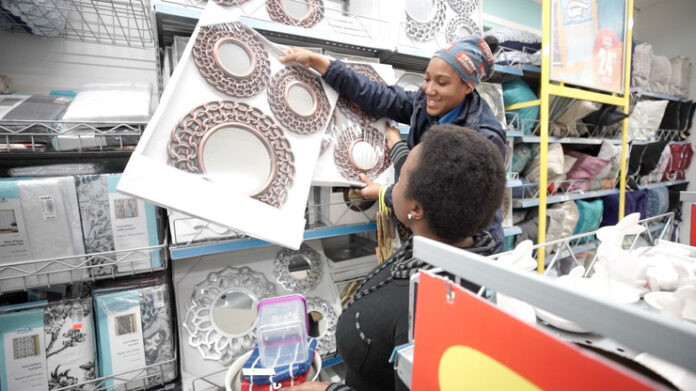Instant Grass, in collaboration with MoyaApp, outlines that today almost all countries now indulge in some form of end-of-November sales events, and whilst South African consumers have gained increasing interest in this retail frenzy over the past decade, this year might be a little different.
Although the 2022 retail season will be the first without covid-19 restrictions, it occurs in an economy with higher global inflation, monetary policy adjustments, commodity price changes and emerging geopolitical risks which all contribute to elevated uncertainty over the medium term.
And whilst those with disposable income are already planning their lists, setting their alerts and reserving baskets, we took a look at what Black Friday means to the adult consumers who earn under R5800 ($336) per month i.e. 75% of South African adult consumers.
Methodology
Instant Grass ran a mobile questionnaire targeting South Africans who have a personal income below R10 000 pm and were planning to shop on Black Friday. There were 600 South African respondents that completed the survey using the MoyaApp and the data was analysed, and insights extracted by Instant Grass. The respondents had a nationally representative location distribution, were all 18 years old or older and represented the racial split as per the latest census. The research was conducted between 8-10 November 2022.
Brands vs Utility
Unlike previous years, the more high-touch products, products that fell into the categories of ‘Kitchen Appliances (fridge kettle, toaster, air fryer)’ and ‘Household Electronics (TV, speaker, computer)’ ranked in a distant third when it came to planned purchases.
Notably not many consumers spontaneously mentioned a particular brand of product but were rather shopping in hopes of being able to afford a simple necessity such as a ‘fridge’ or a ‘kettle’ et al.
Once prompted for their preferred brand, consumers struggled to identify a specific brand name and defaulted to retail names i.e. Checkers, Pick ‘n Pay and Shoprite. There were mentions of in-house brands but it was evident from this data that utility and price are more important than a brand name.
The Basics
The largest outlier from previous years’ data was the interest in and demand for basics and staples. When we asked the question, ‘What products do you plan on purchasing this Black Friday?”, there was an alarmingly high demand for necessities such as clothing, food, cleaning products and alcohol.
The food brands mentioned were staple brands (mostly heritage brands) and the clothing ‘brands’ were mentioned by retailer name – Mr. Price, Sportscene. Pep – and not individual brand names. With an uncertain economic future, a high unemployment rate and all time high inflation it made sense that consumers perceived Black Friday as an opportunity to buy more staple products at a reduced rate as opposed to indulging in luxuries that were drastically reduced in price on the day.
Advertising and Marketing
There was a noticeable paradox in the data as all respondents had already decided what products and brands they were planning to buy (even the amount they were prepared to spend), however with only two weeks to go before Black Friday began, two thirds of the respondents claimed that they were not influenced by advertising when they made their respective decisions
This might be a symptom of the fact that consumers were more focussed on what specific mass-market retailers might be offering on the day, than specific brand messaging. There were multiple mentions of price (over brand) being the number one factor when making a purchasing decision.
‘Any brand that suits my pocket’
Budgeting and In-store
Most respondents said they were prepared to spend between R1 000 and R2 000 on the day and that they had been budgeting since the beginning of the month. Considering the income of the average respondent this was a relatively meaningful budget.
One can conclude that because consumers were prepared to spend, were not yet exposed to much advertising and that the purchase would go to the cheapest retailer, it would be a prudent strategy for retailers to ensure their advertising was exclusively price-focused and as close to the actual transaction as possible.
It is important to note that 98% of consumers claimed that they will be shopping in-store as opposed to shopping online this season.
As the majority of respondents still consume conventional media, marketers need to embark on some very tactical and agile messaging.
Conclusions
As in most countries, South African consumers are becoming accustomed to budgeting and spending during the end of the Black November sales month.
However as South African consumers are more cash-strapped and have a lower disposable income, Black Friday is less about over-consuming during the hysteria of a sales frenzy, and more about buying necessities at a reduced price.
Consumers were hoping to be able to purchase products with high utility value and were focussed on buying staple household electronics and appliances.
The only real indulgence category was beauty products but this was only after the essentials.Almost all respondents were planning not to buy online.
A strong brand was irrelevant as for most consumers the mass-retail brand was the default and even then it depended on which retailer was offering the best price.
Advertising had little influence on the planned purchase but would be essential in the final transaction; albeit only on the day of the sale.
INSTANT GRASS
https://instantgrass.co










